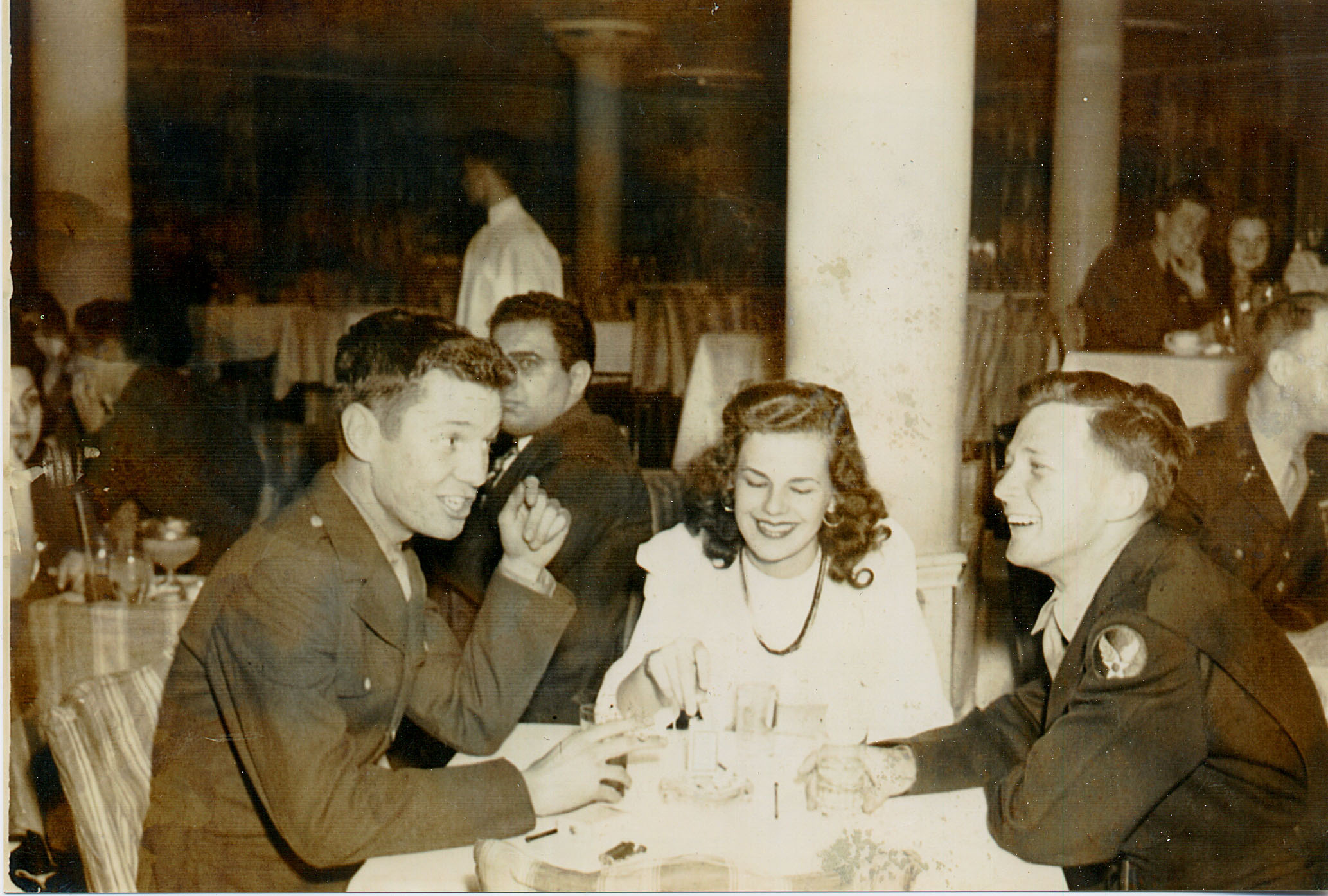
Chapter 3
We
were leading our flight in loose formation nearing Chengtu when we had
to make a let-down on instruments through a thick overcast. We
separated and were spiraling down through this mess when we suddenly
encountered severe turbulence. The plane flipped upside down and
into a spin. The P-61 was redlined against spins. I knew Ab
wouldn't know the best recovery procedure, if any, or how much altitude
could be lost in a spin, or how quickly. It was "bail-out" time,
and Ab hit the "bail-out bell" switch which set up a shattering
clangor. I was going through the actual bail-out procedure and
was leaving the aircraft when I felt the plane respond to Ab's recovery
efforts. In an overcast, there are no terms of visual reference,
no horizon, no up and no down. The airplane, in a spin, is making
a noise like a whirlwind running wild. You can't know for sure if
you are spinning right or spinning left. But somehow, still in
the overcast, purely on instinct, Ab made a recovery after maybe two or
three turns. We had lost 5,000 feet in seconds. We
continued a normal descent, feeling our way down, and broke out of the
clouds into a gray twilight world 300 feet above a rocky, forbidding
landscape. We flew on to Chengtu; I was real glad we weren't
walking. We had flown seven missions prior to our arrival in
Chengtu.
airplane, in a spin, is making
a noise like a whirlwind running wild. You can't know for sure if
you are spinning right or spinning left. But somehow, still in
the overcast, purely on instinct, Ab made a recovery after maybe two or
three turns. We had lost 5,000 feet in seconds. We
continued a normal descent, feeling our way down, and broke out of the
clouds into a gray twilight world 300 feet above a rocky, forbidding
landscape. We flew on to Chengtu; I was real glad we weren't
walking. We had flown seven missions prior to our arrival in
Chengtu.Chengtu was an old place, in the sense that you could be sure it had been there a long, long time, but there were no signs of antiquity, like ruins or old temples. It was, however, a principle Chinese city of maybe a million people. But unlike Kunming, there were clean, wide, uncongested streets, and a feeling of quiet with little traffic -- some trucks and ramshackle buses, but mostly carts, rickshaws and our trucks and jeeps. The city was a hub of commerce with an agricultural base. I don't remember seeing any paved highways out of the city or any railroads.
Chengtu was located in a broad valley about 100 miles wide. Sixty miles westward the Himalayas rose abruptly out of the valley floor to a height of 23,000 feet. To the east, about 40 miles away, another range of mountains rose to about 12,000 feet. During the winter months, a prevailing westerly wind tumbled icy air from the snowy "top of the world" Himalayas down into the Chengtu valley, where it mixed with warmer valley air and condensed into a pea-soup overcast that was as much as 10,000 feet thick. Midday was a dim twilight world. Three in the afternoon was fully dark, and midnight was a total absolute blackness having substance so that sounds became muffled, like when it's snowing. After a long, long night there would come a weak half-dawn at 10 a.m. The weather was always cold and damp. We lived in tents that were also cold and damp with mildew added. We stood alerts during the winter, but there was no enemy activity directed toward Chengtu. In that strange weather none was expected.
Once, Ab and I volunteered to "slow time" a replacement engine, partly so that we could see the sun. "Slow timing" was a boring task that nobody liked to do. Four hours of barely flying at low engine rpm and slow speed.
Our climb away from the field took a long time, but breaking out of the overcast was sensational. The sunlight was blinding, dazzling. The snow-capped peaks of the Himalayas were crystal clear, emerging solidly from the clouds in the distance. We were flying at about 26,000 feet on oxygen. It was crisply cold, but we were dressed for it, not talking, but enjoying the spectacular view, flying fifty miles up the valley and fifty miles back, and then up the valley again. Once a P-51 flew alongside and the pilot waved. He had one little Japanese flag, a victory symbol, painted next to the cockpit. We were envious. I warmed up the radar equipment to have a look, and then turned it back off as there were no targets anywhere in range of us.
As we flew, I woke up, but I hadn't been asleep. I had pitched forward and my head had hit the map board fixed across a corner of the cockpit. I didn't understand what was happening, but I could see my oxygen line hanging between my knees, unconnected. I couldn't concentrate. I thought I would sit up, but didn't move. I had a sense of well-being. It finally registered -- the oxygen line. I fumbled with it -- there was an urgency. I was moving too slowly, too deliberately. My hands were cold. The oxygen fittings wouldn't connect together. Finally, after repeated attempts, I got them connected and working properly.
Recovering from anoxia is immediate. I knew right away what might have happened. Ab and I hadn't been talking on the intercom, so he wouldn't have known about my situation, and half an hour without oxygen at that altitude would have been bad luck for me. The rest of this flight was routine and I resumed my contemplation of the tremendous view.
In Chengtu, as far as we were concerned, one day followed the next without any activity. Our squadron seemed to want to keep the war at arm's length. "B" flight was at Ankang, but there was no activity there, either. We played poker and softball, drank whiskey, flew kites, wrote letters, slept, and read books to pass the time. Ab and I got tired of not being involved in the war. We had flown two "nothing" missions in Chengtu. This gave us a total of nine missions credited toward a required 25 missions to qualify for rotation back to the States. It looked like it was going to be a long war for us, but....
Photo: Smith and his wife, Callie, with a service chum.